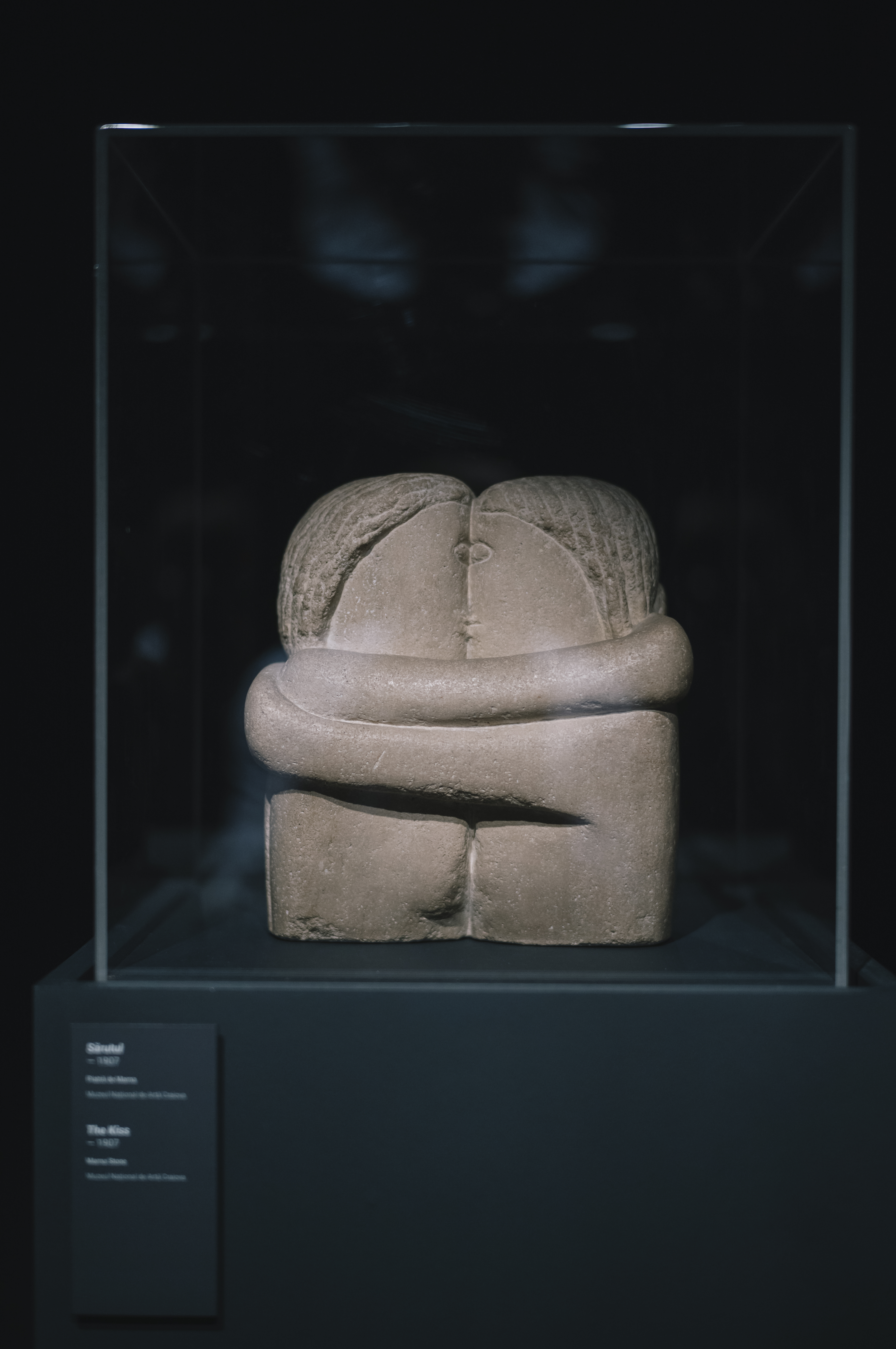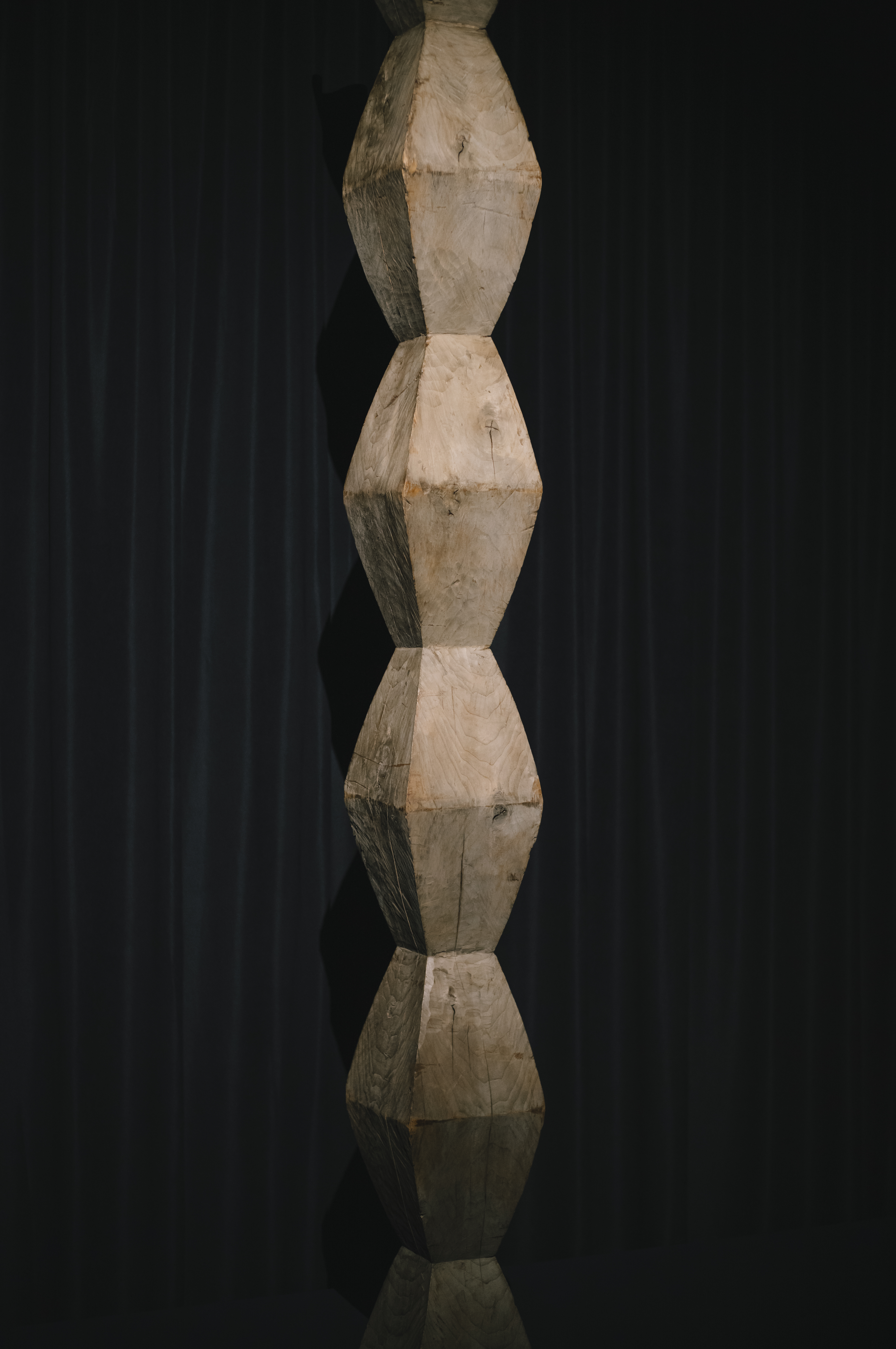
Konstantin Brancusi is known all over the world for his innovative works in the field of sculpture. However, few know Brancusi’s secret passion for music, a passion that left an indelible mark on his life and work. Behind the stone and wood, behind his abstract sculptures, there is a fascinating musical story, an obsession that shaped Brancusi’s experience and art.
In the context of the cultural program of Timisoara 2023 – European Capital of Culture, we have the largest exhibition in Central and Eastern Europe dedicated to the work of a great artist. This impressive exhibition is hosted by the National Art Museum in Timisoara and you can visit it from 30 September 2023 to 28 January 2024. The event is jointly organized by the National Art Museum in Timisoara, the Art Encounters Foundation and the French Institute. in Romania, funded by Timis County Council and with Banca Transilvania as its main partner.
A secret passion for music
Brancusi was born in the village of Hobita in Gorja, Romania. He spent his childhood learning to play various instruments, including the reed, flute and ocarina. From Oltenia, he learned folk songs and collected them in his soul, later delighting his French listeners and everyone who visited his workshop in Paris.
Musical kinship
Dozens of popular songs that Brancusi learned were later found in his works. Romanian music became a source of inspiration, and its influence was visible in many sculptures. According to the composer Marcel Mykhailovych, Brancusi used these songs to create a unique atmosphere in his workshop, where whole hours, days and nights were devoted to theoretical discussions and musical listening.

“When he was a child, he sang in church and even bet that he would make a violin. He did it, then learned to accompany professional artists. This event prompted him to enter the School of Arts and Crafts in Kraiów. When he arrived in the capital of Oltenia, he became part of the choir of the church of Madonna Dudu, and it seems that the priests there especially appreciated the quality of his voice and his innate musicality. First of all, he came to master the art of ringing bells. He became an expert, discovering special effects “with a hammer at his side.” In Bucharest, he was a paid singer in the church of Mavrogeni, and to make the jump to classical music, he was hired by the choir “Carmen” under the direction of DG Kyriac. Thanks to his concern, Brancusi got a position as a singer in a Romanian Orthodox chapel in Paris. “I looked grotesque in my grease-stained cassock, humbly praising everything around me and then handing the censer to the priest, but when it came to ‘Hallelujah’ or ‘The Angel Called,’ I was unsurpassed. Both the priest and the cantor were jealous, especially the cantor, who was so proud of his achievements that he considered them absolute,” V. G. Paleolog quotes the words of his devoted friend in the magazine “Tribune” from Cluj dated March 10, 1969.” , – says Viorel Cosmos.
Friendship with outstanding musicians
Brancusi had a deep connection with the leading musicians of his era. His close friends, V. G. Paleolog and Marcel Mykhailovych, only after the death of the sculptor said that in a mysterious workshop in the dead end of Ronsen, Paris, fun parties took place to songs from the banks of the Jiu River in Oltenia. Such famous composers as Eric Satie, Marcel Mihajlovych and Darius Millau were present in this select circle, which created a bright atmosphere in Brancusi’s workshop. “Uninterrupted hours, days and nights, months and even years of serious theoretical debates and scientific hearings were held there, in the company of Toto Breuil (an outstanding researcher of Romanian folklore), parties full of good mood, accompanied by songs from banks. of the Jiu River from Oltenia in the company of such famous composers as Eric Satie, Marcel Mihajlovych and Darius Millau. Or the elegant dance performances of the Codreanu sisters (here, the Romanian folk costume was sketched for the ballerina Lisica Codreanu, who wore it in a choreographed performance). An unforgettable moment in the life of this artist, this carver of stone and wood, driven to creativity by an archaic melody that he listened to thanks to the latest gramophone records, hidden somewhere between boulders and logs, quietly waiting for their turn to be “polished”. “master”, – says Viorel Cosma.

Despite his deep attachment to music and the significant influence it had on his work, Constantin Brancusi remains a complex and unconventional artist. He was often described as interested in the religious side, but personally did not fit into religious dogma, which is a special characteristic of his personality. Throughout his life, Brancusi had a special relationship with music, favoring the less conventional sounds and rhythms of composers such as Eric Satie and Romanian folk music.

Viorel Cosma noted that “the sculptor was religious, but he was not really a believer. For example, Mykhailovych had an antiphonary that belonged to Brancusi when he was a reader, in which he recorded the scale he had invented. Since he could not read music, he invented signs to play. He was great! He also gave me crackers made for Sati with his own funds after the Poor Sati Liturgy. He liked the French composer for his cheerfulness and crazy music. In his famous Gymnopédies, he used popular Romanian songs, many of which he had heard in Brancusi’s studio, which was constantly supplied with recordings by Toto Braulio. The sculptor also adored African folk music and even black American music (jazz with Armstrong, Dizzy Gillespie, George Gershwin). “

Brancusi’s obsession with music was not only a curiosity, but also a source of constant inspiration in art. Sounds and melodies were an integral part of his life, influencing the way he approached his sculptures and creations. In this way, Brancusi managed to bring music into the world of sculpture in a unique and personal way.
From Viorel Cosma’s book, we also learn that “he preferred spontaneous, direct, simple music. For this visionary artist of simplicity, Wagner’s music sounded “barbaric”, Beethoven’s “too dramatic”, while he found Mozart “gentle and sweet”. He compared J. S. Bach to “a lion that strides majestically in the desert”” (V. G. Paleolog).
Konstantin Brancusi’s secret passion for music was an important part of his creative life and influenced his work. Behind the famous sculptures is a rich and diverse musical universe that has added an extra dimension to his art. Brancusi remains a great example of how two forms of artistic expression can meet and complement each other in unique ways.
The European Capital of Culture is an honorary title awarded by the European Parliament for one year to a city or several cities after evaluating the candidacies of settlements participating in the competition. This contributes to the cultural, social and economic development of some localities and regions of Europe. In 2023, three cities became the cultural capitals of Europe – in addition to Timisoara, they are Elefsina (Greece) and Veszprém-Balaton (Hungary).
Banca Transilvania is the main partner of the European Capital of Culture 2023 – Timisoara and the main partner of the exhibition Constantin Brâncuşi: Romanian sources and universal perspectives.
Article supported by Banca Transilvania
Source: Hot News
Ashley Bailey is a talented author and journalist known for her writing on trending topics. Currently working at 247 news reel, she brings readers fresh perspectives on current issues. With her well-researched and thought-provoking articles, she captures the zeitgeist and stays ahead of the latest trends. Ashley’s writing is a must-read for anyone interested in staying up-to-date with the latest developments.